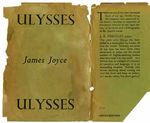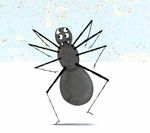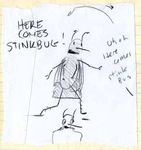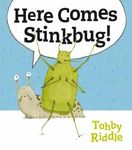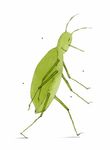Illustrated Author Notes on Here Comes Stinkbug! - Allen & Unwin
←
→
Page content transcription
If your browser does not render page correctly, please read the page content below
Illustrated Author Notes
on Here Comes Stinkbug!
By Tohby Riddle
Introduction
Here Comes Stinkbug! is a simple, humorous story for
young children about a stink bug. As ever, making
anything simple that works is a great creative challenge.
And the following offers some background on my
attempts to meet that challenge.
Here Comes Stinkbug! By Tohby Riddle
Published by Allen & Unwin, 2018
The Idea
ISBN: 9781760523527
Hardcover (24 pages); Ages 3–6
The idea of making a character out of a stink bug had
been floating around in my notebooks for many years.
First of all, I loved the name stink bug – it’s abrupt, funny
and awful, all at once. But a character name is not a
story, and it took a while for me to figure out what to
do with a character who was a stink bug.
The first opportunity I took to have a stink bug in a
book was while working on my visual book of English
grammar, The Greatest Gatsby, which was published in
2015. In the section on simple sentences, I gleefully
used sentences about stink bugs and got to create
three pictures of these funny-awful creatures (note the
jets of stink in the second illustration).
Scribblings from my notebook, 2015
Spread from The Greatest Gatsby: a visual book of grammar, Penguin, 2015
Illustrated Author Notes on Here Comes Stinkbug! © Tohby Riddle 2018Afterwards, thinking I’d like the
challenge of doing a short, simple
book that didn’t take years to create
(like too many of my recent books!),
I revisited my notebook character
Stinkbug ...
The Text
After revisiting Stinkbug as a potential
picture book character, a story quickly
took shape. Though it would need Another scribbling from my notebook, 2015
plenty of drafting if it were to achieve (Often my notebook entries are a kind of shorthand scribble,
the look of effortless simplicity! just to jot an idea down rather than make a careful drawing.)
Writing the text was rather like writing a very simple pop lyric. There were severe limits on word
count and vocabulary (that sounded right) – and, therefore, very little wriggle room to come up
with lines that worked. While some lines did fall into place easily, a handful of crucial lines were
drafted and redrafted many times – sometimes just in my mind, as I lay in bed at night. Those
sentences were like very challenging puzzles.
The style of the writing also took inspiration from the diction and directness of Stinkbug’s name.
The line ‘This bugged Stinkbug and he started to stink a bit’ is an example of that.
A secondary layer of the text is the direct speech of the characters. I hadn’t planned this, but
the characters just started saying things – like good characters often do – and it seemed better
to show this using the graphic conventions of speech bubbles and thought bubbles, rather than
typesetting their speech with repetitive attributions. The intention was that the typeset narrative
could stand alone in telling the story, while the handwritten dialogue extended the storytelling.
Spread from Here Comes Stinkbug!, Allen & Unwin, 2018
Illustrated Author Notes on Here Comes Stinkbug! © Tohby Riddle 2018The Artwork
Like the text, the artwork for Here Comes
Stinkbug! is also simple. Such simplicity was the
result of careful design and distillation. Every
picture element had to perform a function or it
was left out. And no level of detail was shown
unless it was important to the delivery of the
story.
The fun part of illustrating this story was
working with insects. I hadn’t done this
before in a picture book. Although the
insects were simplified and stylised in order
anthropomorphise them a little, I took
advantage of the fact that they might have six
or eights limbs, and more than two eyes. In
particular, this gave opportunities for multiple
hand gestures. I especially had a lot of fun with
the spider (right), who was suitably mesmerising
with his eyes and limbs moving in all kinds of
directions.
The Artwork Style
The characters were painted with coloured
inks with occasional line-work in black pencil.
The backgrounds were done separately using
various textures found in all kinds of unlikely
places: an old, uncoated dust cover from James
Joyce’s Ulysses, where the green paper had
discoloured in interesting ways (used for the
leaves and the log, right); a blue noticeboard
full of pin holes that’s at the local swimming
pool here in Katoomba (used for a sky-like
background behind the charming spider, right);
the foxed endpaper of an old book (used
for another sky-like background); and so
on. Absolutely anything can be a texture for
artwork!
All of these elements – drawn, painted or
collage textures – were scanned and assembled
on the computer to make up the final artwork.
Illustrated Author Notes on Here Comes Stinkbug! © Tohby Riddle 2018The Story
This simple, humorous story about a stink bug is
nonetheless layered with meanings. It poses questions
about our social interactions, potential threats from
strangers, and the risks of not being one’s self – especially
when it really matters.
If any ‘messages’ emerge in the storytelling, however, they
were not a starting point for the story. The starting point
was, simply: who is this funny-awful character, Stinkbug,
and how does his stinking affect things?
I guess the ending shows Stinkbug encouraged to be
himself, but with some added discretion – based on a
little more consideration for others. Which strikes me as
a pretty workable and realistic way to proceed.
And, just to end this section with a question:
Could Leopard Slug be the most likeable slug in
children’s literature?
Illustrated Author Notes on Here Comes Stinkbug! © Tohby Riddle 2018Some Thoughts for Teachers …
Despite its short length and simple pictures, there is still much that can be teased out of
Here Comes Stinkbug! Readers could be asked to engage with the book in the following ways.
Before reading the book …
Think about insects
Where do stink bugs live? Why do they stink? Do they have predators?
Is a slug an insect? Why are slugs slimy?
What are three common names for lady beetles?
The book cover
Look closely at the cover. What do you think might happen in the story?
After reading the book …
Themes to discuss
Stinkbug is friendly. Is friendliness the same as good manners? If not, which is preferable?
Should people change their behaviour to get along with others?
Could there be any problems with not being yourself in order fit in socially?
What are the possible reasons why the charming spider was friendly to Stinkbug?
Language Used
Ant uses the word ‘preposterous’. What does that word mean?
Stinkbug uses the phrase ‘a penny for your thoughts’ when greeting Bumblebee. What does it mean?
Examining the Artwork
How has the artwork been made? What is the medium or mediums? Look closely at the
backgrounds and leaves, etc. Where did these collage textures come from?
Can you use anything to make a picture?
Art Activity
1. Look at leaves and flowers. Study their shapes,
count the petals on the flowers, name the colours,
and so on.
2. Collect or make textures to make your own
leaves and flowers for an artwork. This can be
done by painting on paper, or shading on it with
pencils, or looking for coloured papers, or lined
notebook papers and graph papers, or paper from
paper bags or catalogues or brochures … There
are all kinds of papers around!
3. Carefully cut your textures into the shapes you
want (draw outlines onto the texture first, if you
need to) then arrange them into a composition
and stick them down to make your picture (using a
gluestick).
4.You may want to add your favourite insects to
the scene by drawing them on another piece of
paper, then cutting them out and sticking them into
your picture.
Illustrated Author Notes on Here Comes Stinkbug! © Tohby Riddle 2018You can also read





